Automated dropshipping is transforming how e-commerce businesses operate. In this guide, I’ll walk you through what dropship automation is, its benefits and challenges, how to set it up, and the best tools for making it work in 2025. This isn’t just theory—this is insight from years of hands-on experience helping e-commerce businesses thrive.
What is Automated Dropshipping?
Automated dropshipping simplifies the dropshipping business model by integrating software and tools to handle tasks like inventory updates, order fulfillment, and even customer service. Think of it as a system where technology acts as your behind-the-scenes operations team.
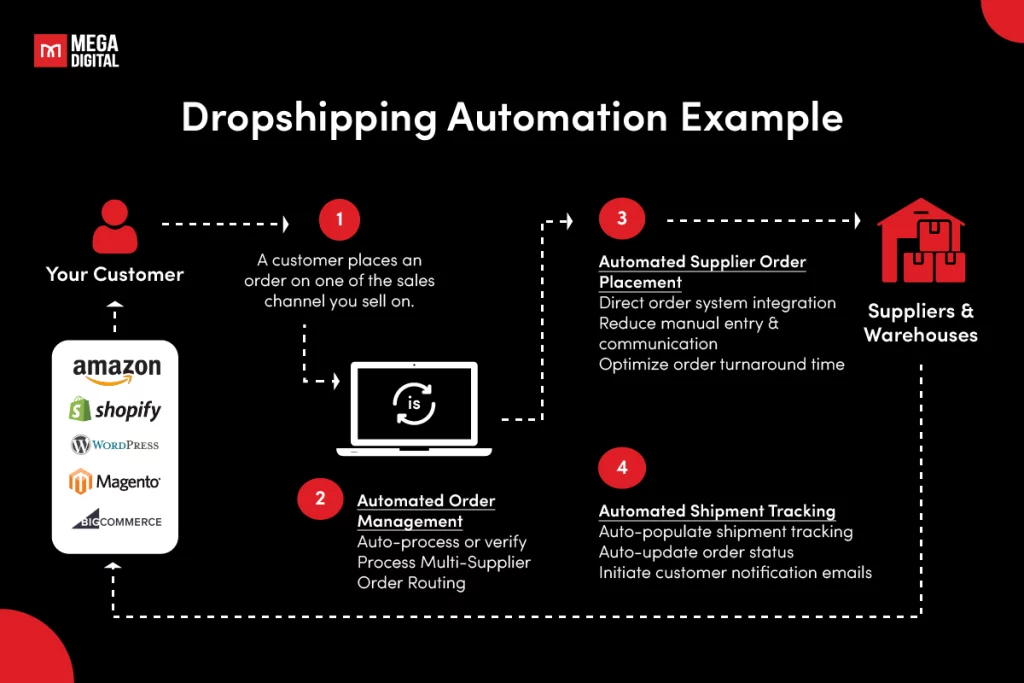
For example, instead of manually checking your supplier’s stock or manually placing orders after each sale, automation tools ensure your store syncs with suppliers in real time. Orders flow seamlessly from your store to the supplier, and shipping updates are shared with customers without you lifting a finger.
Pros & Cons of Automated Dropshipping
While automation can save time and effort, improve accuracy, and enable growth, it also comes with certain considerations.
Pros of Dropship Automation
Let’s take a look at what automation brings to the table.
Efficiency and Time Savings
Automated tools significantly reduce the time spent on repetitive tasks like updating inventory or processing orders. For instance, tools like DSers allow you to fulfill hundreds of orders in seconds—a task that could take hours manually.
Scalability
Automation makes it possible to manage a store with thousands of products and customers without hiring additional staff. It’s the difference between driving a car and running a high-speed train—you’re equipped for a much larger load.
Minimized Errors
Automation reduces human error, whether it’s accidentally overselling an out-of-stock product or inputting incorrect shipping details. Accurate data improves customer satisfaction and prevents costly mistakes.
Better Multi-Channel Management
Many automation tools allow you to sync inventory and orders across platforms like Shopify, Amazon, and eBay, ensuring consistency no matter where you sell.
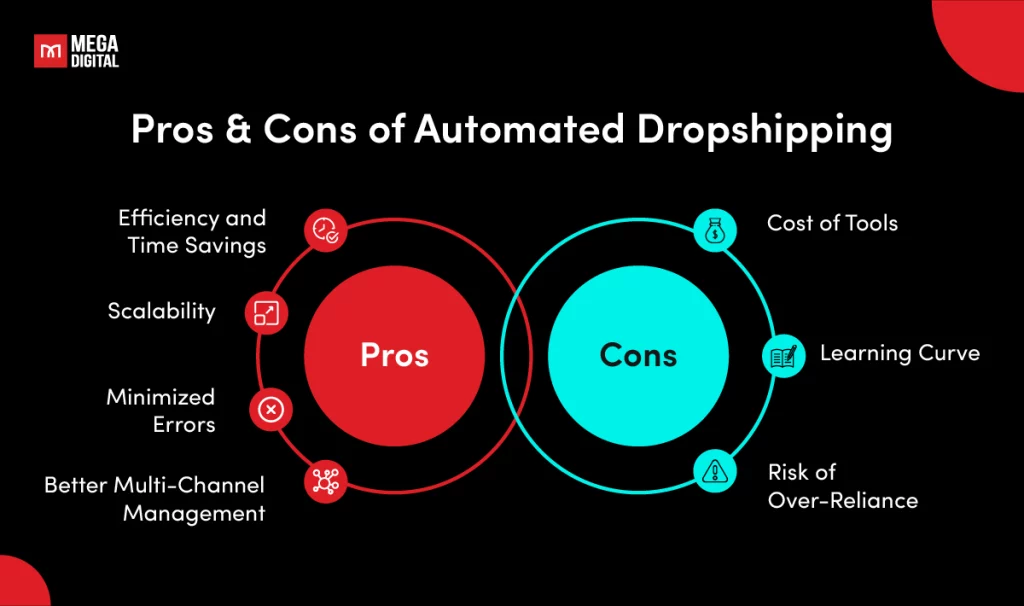
Cons of Dropship Automation
While automation can enhance efficiency, it’s essential to understand the potential downsides. These challenges can impact your operations if not addressed properly.
Cost of Tools
Quality automation tools come with subscription fees, and for smaller stores, these costs can quickly add up. For instance, AutoDS starts at a modest price but can become costly as you scale.
Learning Curve
While automation saves time in the long run, getting familiar with multiple tools and integrating them properly can take time and effort, especially if you’re new to e-commerce.
Risk of Over-Reliance
Automated systems are not foolproof. A malfunction or an API outage can disrupt your operations, highlighting the need for periodic monitoring.
How To Automate Dropshipping?
Automating dropshipping is not just about adopting the latest tools—it’s about creating a system that minimizes manual work while maximizing efficiency and scalability.
Here’s a detailed guide to help you set up a streamlined, automated dropshipping operation:
Select the Right E-Commerce Platform
The e-commerce platform forms the foundation of any dropshipping business. It plays a critical role in determining how smoothly automation tools integrate with the store.
Below, I have conducted a comparison of the best platforms for dropshipping that have the most user-friendly interfaces and robust ecosystems.
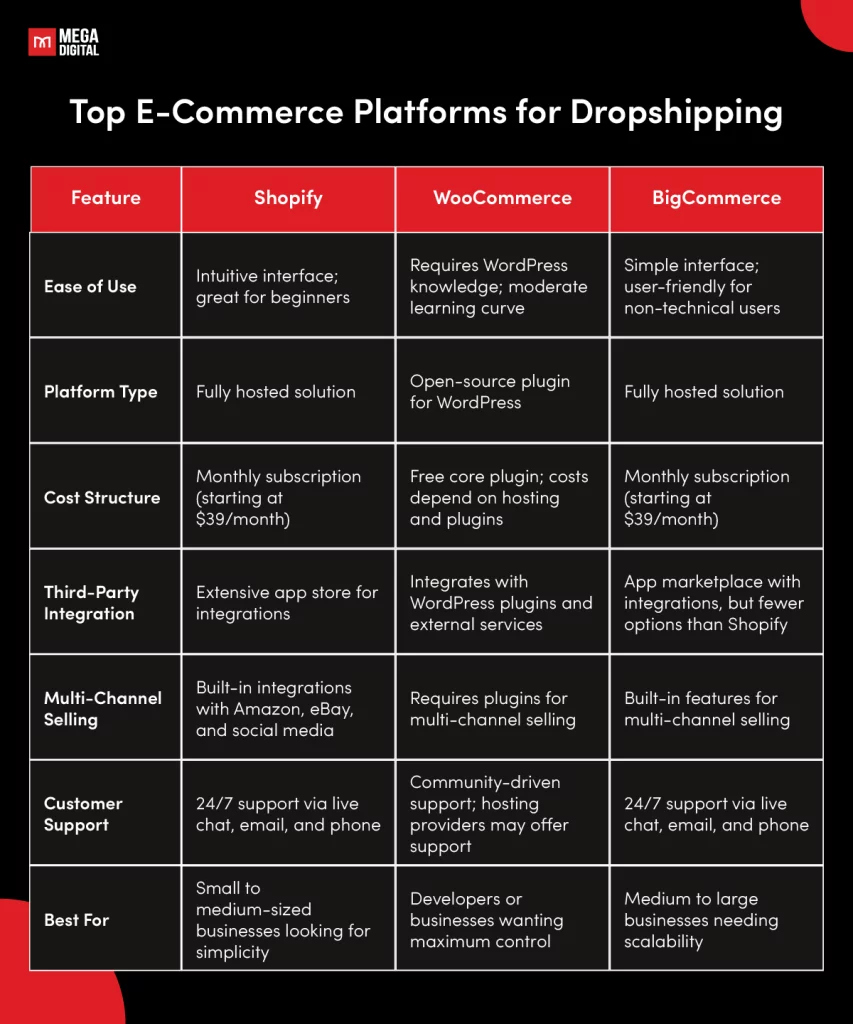
Partner with Reliable Suppliers
The reliability of suppliers is essential for successful automation. Suppliers who provide real-time inventory updates and API integrations ensure that stock levels and order processes remain accurate.
For example, using SaleHoo, you can access over 8,000 verified suppliers, ensuring product quality and reliability. Its Market Research Lab helps identify profitable, high-demand products, streamlining the sourcing process and reducing the risk of unreliable partnerships.
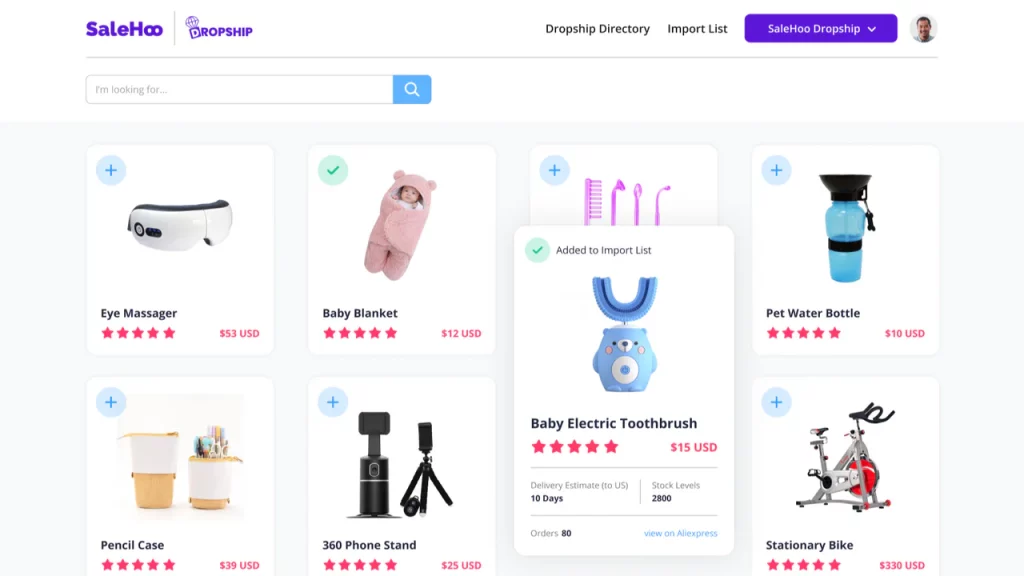
Businesses should also test supplier performance by placing sample orders before fully integrating them into the operations. Reliable suppliers contribute significantly to building a stable and scalable automated system.
>>> Read more: How to Find Dropshipping Suppliers: Complete Order Fulfillment
Automate Product Listings and Inventory Management
Managing product listings and inventory can be time-intensive, but automation tools simplify these tasks. Tools like AutoDS and DSers allow businesses to import products directly from suppliers while keeping inventory data up-to-date in real-time.
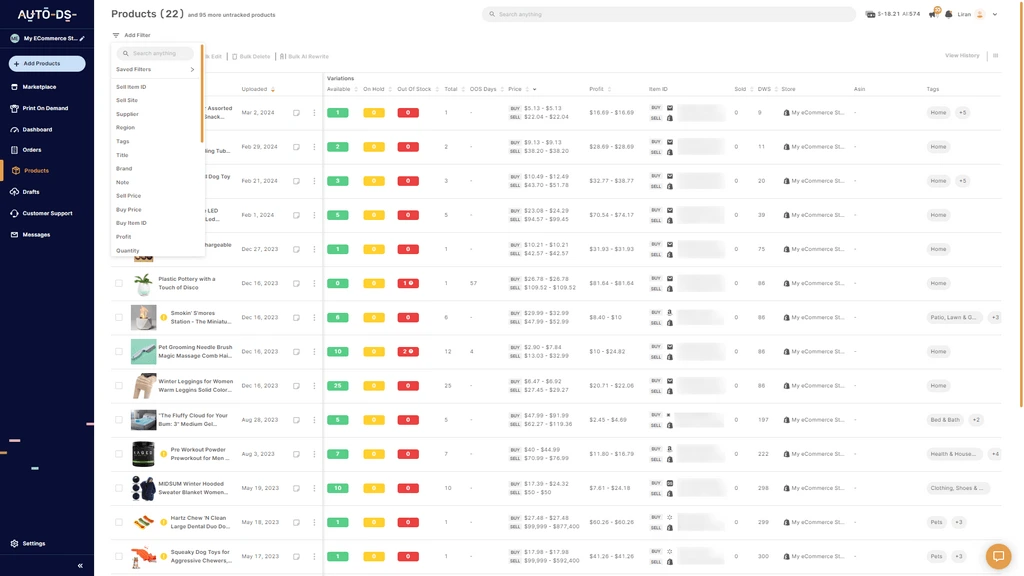
Setting automated pricing rules based on factors like profit margins or competitor pricing ensures consistent and profitable pricing strategies. By automating product management, businesses can maintain a professional and accurate store without constant manual adjustments.
Streamline Order Fulfillment
Automating order fulfillment is a crucial step in creating an efficient dropshipping system. When a customer places an order, tools like DSers can automatically forward the order to the supplier, who ships the product directly to the customer.
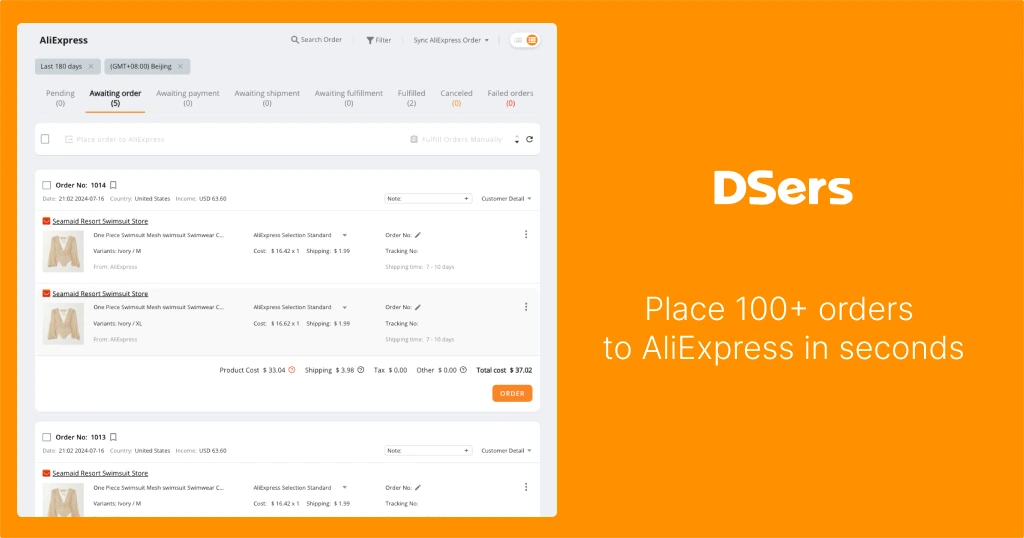
This process eliminates manual tasks while providing customers with tracking updates. Automation tools also enable bulk order processing, which is particularly valuable during high-sales periods like holidays or promotions.
Enhance Marketing and Customer Engagement
Marketing automation plays a significant role in driving sales and building customer relationships. Tools like Mailchimp and Klaviyo help create targeted email campaigns, such as abandoned cart reminders or product recommendations, based on customer behavior.
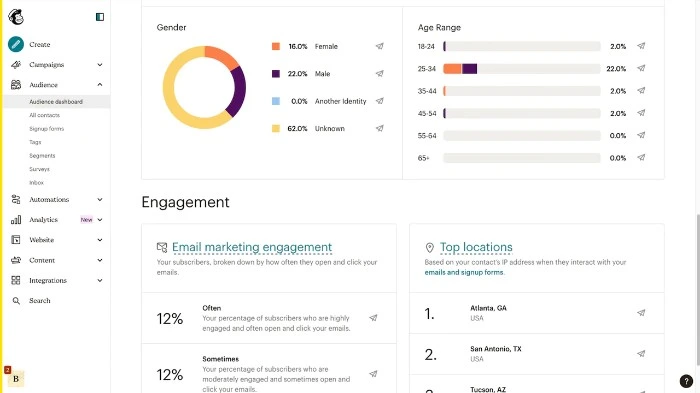
Social media engagement can also benefit from automation. Scheduling tools like Hootsuite allow businesses to maintain a consistent online presence by planning posts in advance. Personalizing marketing efforts through segmentation and analytics ensures that campaigns remain effective and relevant.
Improve Customer Service with Automation
Customer service automation ensures prompt and consistent responses to inquiries, enhancing customer satisfaction, especially if you do private label dropship. Platforms like Zendesk offer automated ticket management systems that categorize and prioritize customer requests. Chatbots, such as those provided by LiveChat, handle common inquiries like order tracking or return policies.

A knowledge base with pre-written FAQs can reduce the number of repetitive queries while empowering customers to find answers independently. Automating these aspects of customer service allows businesses to provide a seamless and professional experience.
Should You Implement Automation for Your Dropshipping Store?
Becoming a dropshipper is not always easy. Do you find yourself struggling with any of the following issues?
- Too much time spent on repetitive tasks
- Fail to ensure customer satisfaction
- Overselling products that are out of stock
- Struggling to keep up with growth
- Inconsistent customer communication
- Difficulty managing multiple channels
If these pain points sound familiar, automation can significantly enhance your efficiency, accuracy, and scalability, allowing you to focus on strategically growing your business.
However, implementing automation of dropshipping doesn’t mean you’re entirely hands-off.
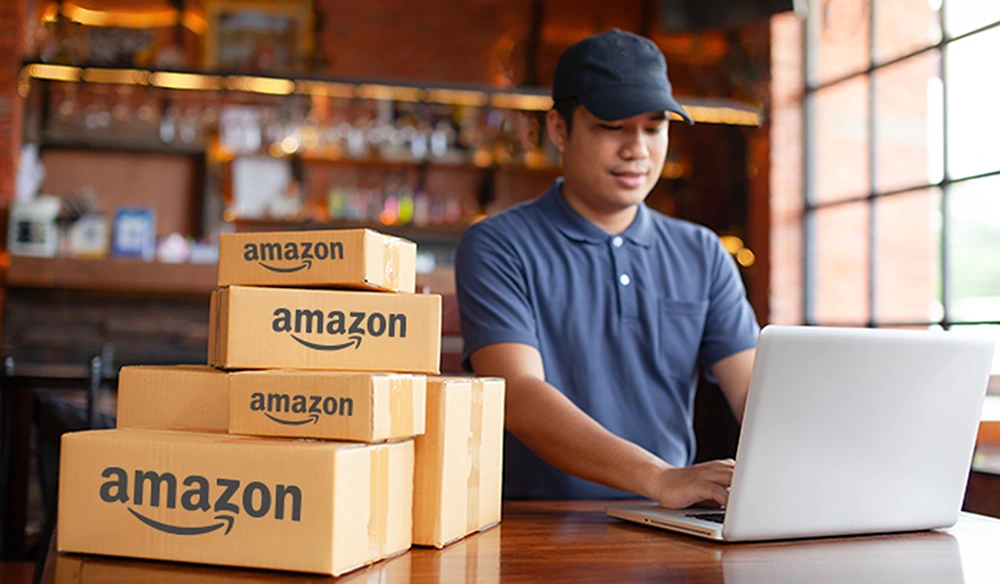
Automation excels in efficiency but doesn’t replace the need for strategic thinking and human interaction. A fully automated store may save you time but could lack the personal touch that sets your brand apart.
Instead, consider a hybrid approach. Automate tasks like inventory management and order fulfillment while maintaining direct involvement in customer interactions and marketing campaigns. This balance allows you to scale your operations without losing the unique aspects of your brand.
>>> Read more: Top 21+ Dropshipping Products with High-Profit Margin
Case Study: How LuxeDecor Automated Dropshipping to Scale Their Online Business
To further visualize how automated dropshipping can help you transform your business, let’s explore a real-world case study of a client who partnered with Mega Digital!
*The name of the business has been modified due to confidentiality agreements.

LuxeDecor, a premium home furniture and décor e-commerce store, was founded in 2018 with the vision of bringing high-quality furniture to customers without the overhead of maintaining physical inventory.
Initially, LuxeDecor manually managed their operations, spending countless hours on tasks like updating inventory, processing orders, and managing customer inquiries.
Recognizing the inefficiencies and potential for growth, the company turned to dropshipping automation in 2022.
Challenges Before Automation
LuxeDecor’s reliance on manual processes created several operational issues:
- Inventory Management Problems: Frequent overselling or out-of-stock issues led to 20% of orders requiring refunds.
- Order Processing Delays: Processing 100+ daily orders manually caused fulfillment delays, with 30% of orders shipped late.
- Scalability Constraints: Their team struggled to manage a growing product catalog of 500 items while expanding into new sales channels like Amazon and eBay.
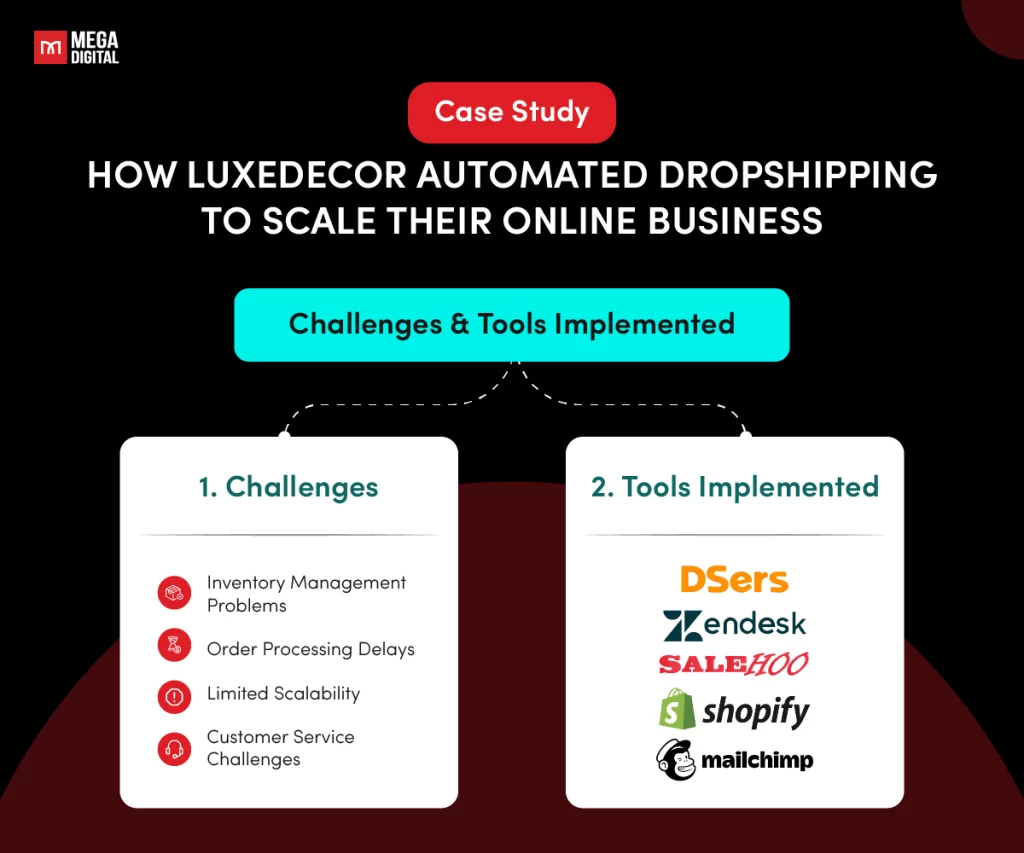
The Solution: Implementing Dropshipping Automation
In 2022, LuxeDecor decided to integrate dropshipping automation tools into their business model. Their approach included the following steps:
Choosing a Scalable E-Commerce Platform
LuxeDecor migrated to Shopify, which offered seamless integration with leading automation tools and supported multi-channel selling.
Automating Inventory and Order Fulfillment
They implemented DSers to automate inventory updates and order forwarding. This ensured real-time stock synchronization with suppliers and significantly reduced manual errors.
Streamlining Marketing with Mailchimp
By integrating Mailchimp, LuxeDecor automated email campaigns, including abandoned cart recovery and personalized product recommendations, which helped re-engage customers and boost conversions.
Expanding Product Sourcing
The company used SaleHoo to find reliable suppliers and expand their product catalog, ensuring access to high-quality products that aligned with their premium brand image.
Results After Automation
With dropshipping automation, LuxeDecor went from a struggling small business to a scalable, thriving online store.
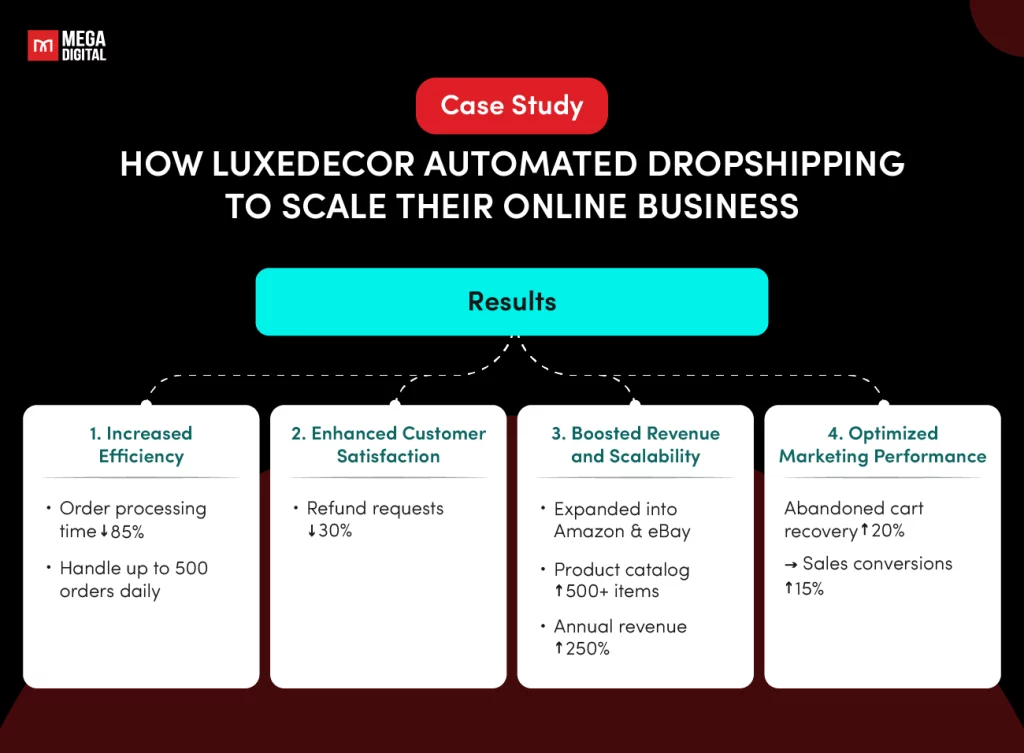
Conclusion
Automating your dropshipping business is about working smarter, not harder. The right tools and strategies will free you from repetitive tasks and focus on scaling your store. But, keep in mind that automation isn’t about eliminating your role—it’s about amplifying your impact.
With the right approach, you’re not just running a store; you’re building a business that runs like a well-oiled machine.
The tools are here. The next step is yours.










